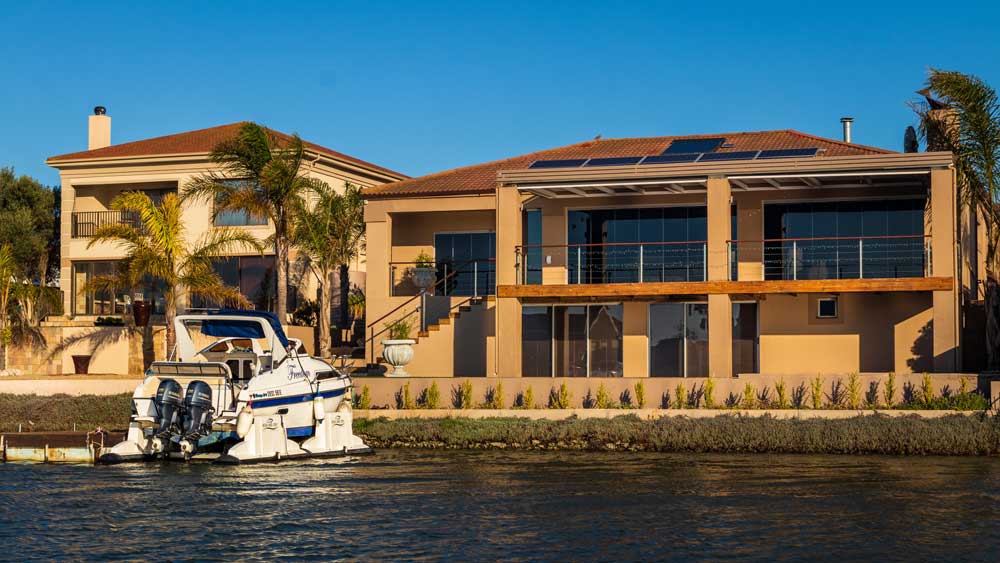
Many Americans and Canadians have significant equity built up in their home, which may feel untouchable. However, a second mortgage makes it possible to tap into the equity.
A second mortgage is an additional loan taken out on a property that’s already mortgaged. If you have equity built up, a second mortgage is a great way to have money to buy a vacation home in the US or Canada.
If you’re like most people you may wonder how to qualify for a second mortgage. Keep reading to learn how.
The Different Types of Second Mortgages
Just like when you applied for your first mortgage, you must qualify for a second mortgage. It’s not as hard as it seems, but first, you must understand your options.
- HELOC – A home equity line of credit is a credit line against your home’s equity. Like a credit card, you’re issued a credit line you can leave or use. If you use it, you make interest payments on the amount withdrawn and can choose to pay principal or not. The interest rate is variable and could change often.
- In the US, you can use funds during the ‘draw period’ which lasts three to ten years. After the draw period, you enter repayment. During this time you pay principal and interest on any outstanding balance until it’s paid off, for a total term of up to 30 years (10 in the draw period and 20 in repayment).
- In Canada, most HELOCs have an indefinite term where you can either make interest-only payments or also repay the principal whenever you like without any prepayment penalties.
- Home equity loan – This is a second mortgage on a house. You receive your funds as one lump sum and make principal and interest payments right away. Unlike with a HELOC, the interest rate is fixed, so you have predictable payments each month, but cannot ‘redraw’ funds as it’s a closed-end mortgage.
- Cash-out refinance – A cash-out refinance isn’t technically a second mortgage. Instead, it combines the benefit of a second mortgage with the first. To qualify, you must pay off your first mortgage with the new loan, but instead of borrowing the same amount as your outstanding principal, you’ll tap into your home’s equity. A cash-out refinance has one payment and can have a fixed or adjustable interest rate, depending on what you prefer and/or the lender will approve. You receive the difference between the new loan amount and your first mortgage payoff in hand to use as you want.
When comparing how to qualify for a second mortgage, a second mortgage has tougher qualifying requirements because the second mortgage lender takes second lien position. This means they have less of a claim to the property than the first mortgage lender.
Where Can You Get Second Mortgages?

Second mortgages are available from the same banks you can get your first mortgage. Popular places are major banks, mortgage lenders, mortgage brokers, trust companies, and private lenders.
If you have ‘weaker’ qualifying criteria, focus your efforts on private lenders or trust companies. They typically have more flexible guidelines than traditional banks. This is especially important if you’re worried about how much can I get approved for a second mortgage? Private lenders and trust companies are more lenient in their offering.
How to Qualify for a Second Mortgage
It’s important to realize second mortgages have higher interest rates due to the risk. Second mortgage lenders are in second lien position. If you default on your loan, the first lienholder gets paid first. If there are tax liens on the home, those get paid out even before the first mortgage company.
This often leaves second mortgage lenders with little to no proceeds. To compensate for this risk, second mortgage lenders charge higher rates. To keep your rate to a minimum, you’ll need to know how to qualify for a second mortgage. Here are general rules of thumb:
- Minimum 640 credit score, but a score over 700 will increase your chances and decrease your interest rate
- Maximum debt-to-income ratio of 43% (your total monthly debts shouldn’t exceed 43% of your gross monthly income or income before taxes)
- Strong history of stable income and employment
- Leave at least 15%, but up to 25% equity in the home untouched
If you don’t meet the above guidelines, don’t worry, trust companies and private lenders may offer more relaxed guidelines, allowing you to secure a second mortgage, but watch the interest rate to ensure it makes sense to borrow the funds.
How Much Can You Get Approved for a Second Mortgage?
Everyone wants to know, how much can I get approved for a second mortgage? Just like a first mortgage, it differs. In the United States, for example, you may borrow up to 85% of the home’s value (less the amount you owe on your first mortgage) from some lenders if you have great qualifying factors. Others may restrict you to 80% of such value. In Canada, most lenders restrict your borrowing capacity to 80% of the home’s value (less the amount you owe on your first mortgage), although lower limits exist for HELOC loans with federal financial institutions.
Keep in mind, the maximum borrowing limit includes your first mortgage. For example, if your home is worth $350,000 and your first mortgage has a balance of $175,000, in the US you may be able to borrow up to $122,500 (85% of $350,000 less outstanding mortgage of $175,000) and in Canada up to $105,000 (80% of $350,000 less outstanding mortgage of $175,000).
A down payment of this size could increase your chances of securing an affordable mortgage to buy a second home in the United States, Canada or elsewhere. A substantial down payment helps offset the risk of default on a home that isn’t your primary residence. Therefore, your application is more desirable in the eyes of a lender.
How to Increase Your Chances of Second Mortgage Approval

If you wonder how to qualify for a second mortgage, here are some tips to help increase your chances of approval.
- Establish a strong credit history. Pay your bills on time and keep your credit card debts low to keep your credit score high.
- Reduce your debt-to-income ratio. Keeping your debts low will increase your chances of approval. Either pay your balances down or increase your income by taking on a side gig or part-time job.
- Reduce excess credit limits. Further to the above, if you have unused credit cards you may want to consider getting rid of them or reducing the limits. This is because a lender will consider any credit cards to be drawn to their full limit. For example, if you have two credit cards, each with a $10,000 limit, a lender will write down $20,000 in debt against you.
- Stabilize your employment and income. Try keeping the same job for at least 2 years and show stable income to reduce your risk of default.
- Keep a solid mortgage payment history. Second mortgage lenders will focus on your mortgage payment history, and if you have any late housing payments it could hurt your chances of approval.
Final Thoughts – How to Qualify for a Second Mortgage
While it’s a little tougher to qualify for a second mortgage, it’s not impossible. With a little preparation and good personal financial choices, you can borrow against your home’s equity to buy the perfect vacation home.
Curious to know how much you can afford in a second home? Be sure to explore our article on how much second home you can afford as well as our vacation home affordability calculator.
